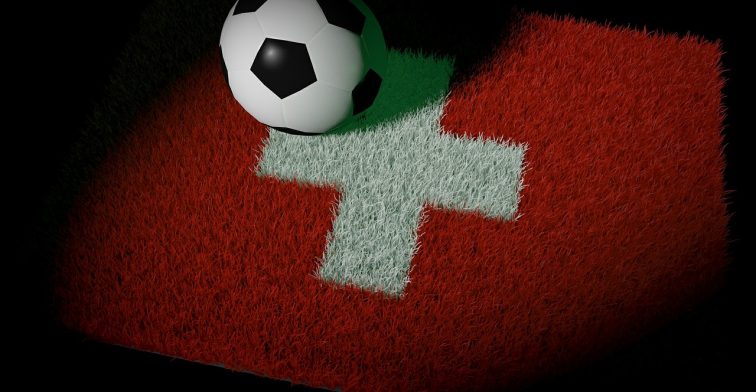What is the UEFA Nations League?
This week sees the start of the newly formed UEFA Nations League, which will see a new form of football played by international teams. The whole shake up has been designed to cut out pointless and meaningless friendlies, and replace them with competitive games that have the potential to mean something to the teams taking part. Fans of international football are not interested in friendly games, and hopefully this move will make the games far more appealing to people across Europe.
The lower nations who are taking part in the UEFA Nations League have another incentive to play well and take this seriously, and that is because this could be their best chance of a spot at Euro 2020. Four teams will qualify for the next major European competition through the playoffs and the playoff spots are given to those who perform the best in the Nations League, so it will make sense for these teams to take the games very seriously.
UEFA Nations League – Groups and Leagues
There are four leages that make up the UEFA Nations League, and these are labelled as A, B, C and D. The top league is A, and here you will find the top ranked nations in European football right now. The next batch are in league B, lowr ranked teams in league C and finally the lowest ranked teams will be in league D. By splitting them like this, we will no longer see uneven and uncompetitive friendly games against two teams that are miles apart in terms of quality. Teams will play those ranked similar to them, so the majoirty of games should be competitive and good to watch.
Inside each league is four groups, and it is the teams that are drawn together in these groups that will play each other. For example, there are 12 teams in league A, but England will only play the tems they have drawn in their group, which is Spain and Croatia this time around. Teams play each other home and away in a group stage to determine who wins the group.
Promotion and relegation will be in play for the UEFA Nations League, so those who finish top of their group in league B will be promoted to the top tier league A, while those finishing bottom in league A will be relegated to league B.
The overall winner of the Nations League can only come from league A. The four group winners in league A will progress to a final round which will take place next June. These four teams will battle it out in a new league, with the winner being crowned the innagural UEFA Nations League champion.
Here is a run down of all the leagues and groups that have been drawn for this year’s competition.
LEAGUE A
Group A1: Germany, France, Netherlands
Group A2: Belgium, Switzerland, Iceland
Group A3: Portugal, Italy, Poland
Group A4: Spain, England, Croatia
LEAGUE B
Group B1: Slovakia, Ukraine, Czech Republic
Group B2: Russia, Sweden, Turkey
Group B3: Austria, Bosnia and Herzegovina, Northern Ireland
Group B4: Wales, Republic of Ireland, Denmark
LEAGUE C
Group C1: Scotland, Albania, Israel
Group C2: Hungary, Greece, Finland, Estonia
Group C3: Slovenia, Norway, Bulgaria, Cyprus
Group C4: Romania, Serbia, Montenegro, Lithuania
LEAGUE D
Group D1: Georgia, Latvia, Kazakhstan, Andorra
Group D2: Belarus, Luxembourg, Moldova, San Marino
Group D3: Azerbaijan, Faroe Islands, Malta, Kosovo
Group D4: FYR Macedonia, Armenia, Liechtenstein, Gibraltar
UEFA Nations League – Euro 2020 Qualification
The big draw of the UEFA Nations League is for the smaller nations that are taking part. Euro 2020 is just around the corner and everyone wants to qualify. For smaller nations, a good performance in the Nations League may be their best chance of getting in. Four playoff spots are up for grabs for Euro 2020, and instead of teams being chosen due to performance in the Euro 2020 qualifying groups, they will be chosen based on performance in the Nations League.
The 16 league winners will book their place in the Euro 2020 qualifying playoffs, and if a team wins who has already qualified, their place will go to the next best team. The 16 teams will be split into four, with one-off semi finals and a final determining the four winners from each section. These four teams will take the remaining four Euro 2020 spots.
The big advantage that smaller nations have is that during this playoff round, teams will remain seeded in their leagues. For example, if Scotland won their Nations League group then they would go into the playoff round and play against teams who are from the same league as them, meaning they don’t have to face one of the bigger nations like they would have done in the past. This should make qualification easier to achieve for teams like them, and it certainly adds another element to the Nations League.
UEFA Nations League – The Final
To give the teams in the top division something to play for, the four group winners will move forward to the UEFA Nations League Final, where they will play for a trophy. These teams are not likely to need the Euro 2020 qualification incentive, so creating a final should keep them interested and the games competitive. The final will take place in June 2019, with a venue to be decided from the four teams that qualify.

















